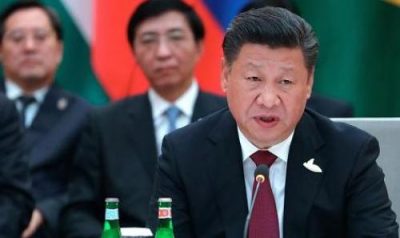China Retaliates Against US-Imposed Tariffs

On Friday, the Trump regime announced a 25% duty on $50 billion of Chinese goods, targeting imports “contain(ing) industrially significant technologies.”
A White House statement said tariffs will be imposed on “goods related to China’s Made in China 2025 strategic plan to dominate the emerging high-technology industries that will drive future economic growth for China, but hurt economic growth for the United States and many other countries.”
In May 2015, China’s State Council unveiled a 10-year plan to transform the country into a global industrial and high-tech manufacturing power.
Follow-up plans aim to further enhance China technologically and industrially by 2049, the People’s Republic of China’s 100th anniversary.
Nine priorities include:
1. improving manufacturing innovation;
2. integrating technology and industry;
3. strengthening the industrial base;
4. promoting Chinese brands;
5. enforcing green manufacturing;
6. pursuing breakthroughs in 10 key sectors;
7. restructuring the manufacturing sector;
8. promoting service-oriented manufacturing as well as manufacturing-related service industries; and
9. internationalizing manufacturing.
Ten key sectors focused on include:
1. new information technology;
2. numerical control tools and robotics;
3. aerospace equipment;
4. ocean engineering equipment and high-tech ships;
5. railway equipment;
6. energy saving and new energy vehicles;
7. power equipment;
8. new materials;
9. medicine as well as medical devices; and
10. agricultural machinery.
Beijing retaliated straightaway against US duties, announcing 25% tariffs on 659 US products worth about $50 billion.
Around two-thirds of this amount will be implemented on July 6, the remainder on a date to be announced – the first round imposed on soybeans, corn, wheat, rice, sorghum, beef, pork, poultry, fish, dairy products, nuts and vegetables, autos and aquatic products, according to Beijing’s Ministries of Finance and Commerce, the latter ministry saying:
“All the previous agreements reached through talks will become invalid. China doesn’t want to engage in a trade war, but in face of the shortsighted acts from the US side, (Beijing) is forced to take strong and forceful measures to hit back.”
On Friday, US-China Business Council president John Frisbie issued a statement, saying:
“We urge both governments to sit down and negotiate a solution to these important issues. American companies want solutions, not sanctions.”
“Tariffs will not solve these problems, but will harm American economic interests and jobs. Rather than inflicting damage on ourselves, we should be seeking ways to address the problems with China.”
Both countries held three rounds of talks, unable to resolve differences so far, further negotiations coming in Washington and Beijing.
Things are far from a full-blown trade war. The risk of one remains if agreement isn’t reached on major issues in the months ahead.
On Friday, the White House threatened Beijing with additional duties if it retaliated – perhaps to be announced in the coming days given China’s announced $50 billion in tariffs, matching in amount what Trump ordered imposed.
On Thursday, Global Trade Watch director Lori Wallach questioned whether Trump has a coherent strategy to deal with America’s huge structural trade deficit with China – responsible for eliminating 3.4 million US jobs since 2001, she explained.
“(R)eality (is) that to date, he has miserably failed to deliver on his China trade promises,” Wallach stressed, adding:
“Our trade deficit with China has grown considerably since Trump was elected, and American job outsourcing continues and will intensify given that his tax scam was packed with incentives to relocate US production offshore.”
Paul Craig Roberts explained
“that America’s ‘trade problem’ is entirely of its own making and is not due to Mexico, Canada, China, and Europe.”
It’s all about “globalism, neoliberal economics, and” the power of Wall Street over US policy – especially its ownership of and control over the misnamed Federal Reserve.
America’s trade deficit with China and other countries “has its origin in the offshoring of American jobs,” Roberts stressed – longstanding US policy, exacerbated under Trump, as Wallach explained.
Put another way, America’s huge structural trade deficit was made in the USA, not abroad in China or anywhere else.
*
Stephen Lendman is a Research Associate of the CRG, Correspondent of Global Research based in Chicago.
VISIT MY NEW WEB SITE: stephenlendman.org (Home – Stephen Lendman). Contact at [email protected].
My newest book as editor and contributor is titled “Flashpoint in Ukraine: How the US Drive for Hegemony Risks WW III.”
http://www.claritypress.com/LendmanIII.html
Featured image is from Zero Hedge.

